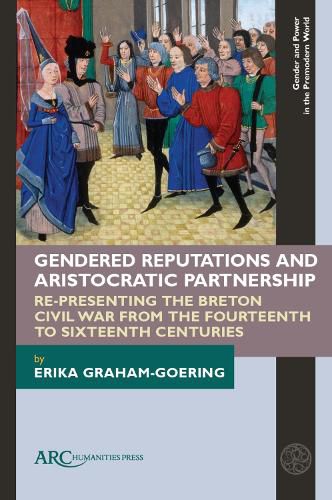Readings Newsletter
Become a Readings Member to make your shopping experience even easier.
Sign in or sign up for free!
You’re not far away from qualifying for FREE standard shipping within Australia
You’ve qualified for FREE standard shipping within Australia
The cart is loading…






Medieval rulership is increasingly understood as the exercise of shared power, and nowhere was this partnership more evident than between married couples. The study of reputation provides a new way of assessing how the expectations of martial lordship adapted to this joint authority. This book examines the messy legacies of Jeanne de Penthievre and Charles de Blois, duchess and duke of Brittany, and their fight to claim the ducal title at the start of the Hundred Years' War. Their story was retold across a prolonged period of political turbulence by successive generations of narrators, who justified legitimate leadership according to disparate standards of sanctity, chivalry, and dynasty. This process shows how the gendering of one reputation influenced the gendering of the other, and how aristocratic attitudes towards violent conflict worked through positive and negative models for both the women and the men in charge.
$9.00 standard shipping within Australia
FREE standard shipping within Australia for orders over $100.00
Express & International shipping calculated at checkout
Medieval rulership is increasingly understood as the exercise of shared power, and nowhere was this partnership more evident than between married couples. The study of reputation provides a new way of assessing how the expectations of martial lordship adapted to this joint authority. This book examines the messy legacies of Jeanne de Penthievre and Charles de Blois, duchess and duke of Brittany, and their fight to claim the ducal title at the start of the Hundred Years' War. Their story was retold across a prolonged period of political turbulence by successive generations of narrators, who justified legitimate leadership according to disparate standards of sanctity, chivalry, and dynasty. This process shows how the gendering of one reputation influenced the gendering of the other, and how aristocratic attitudes towards violent conflict worked through positive and negative models for both the women and the men in charge.